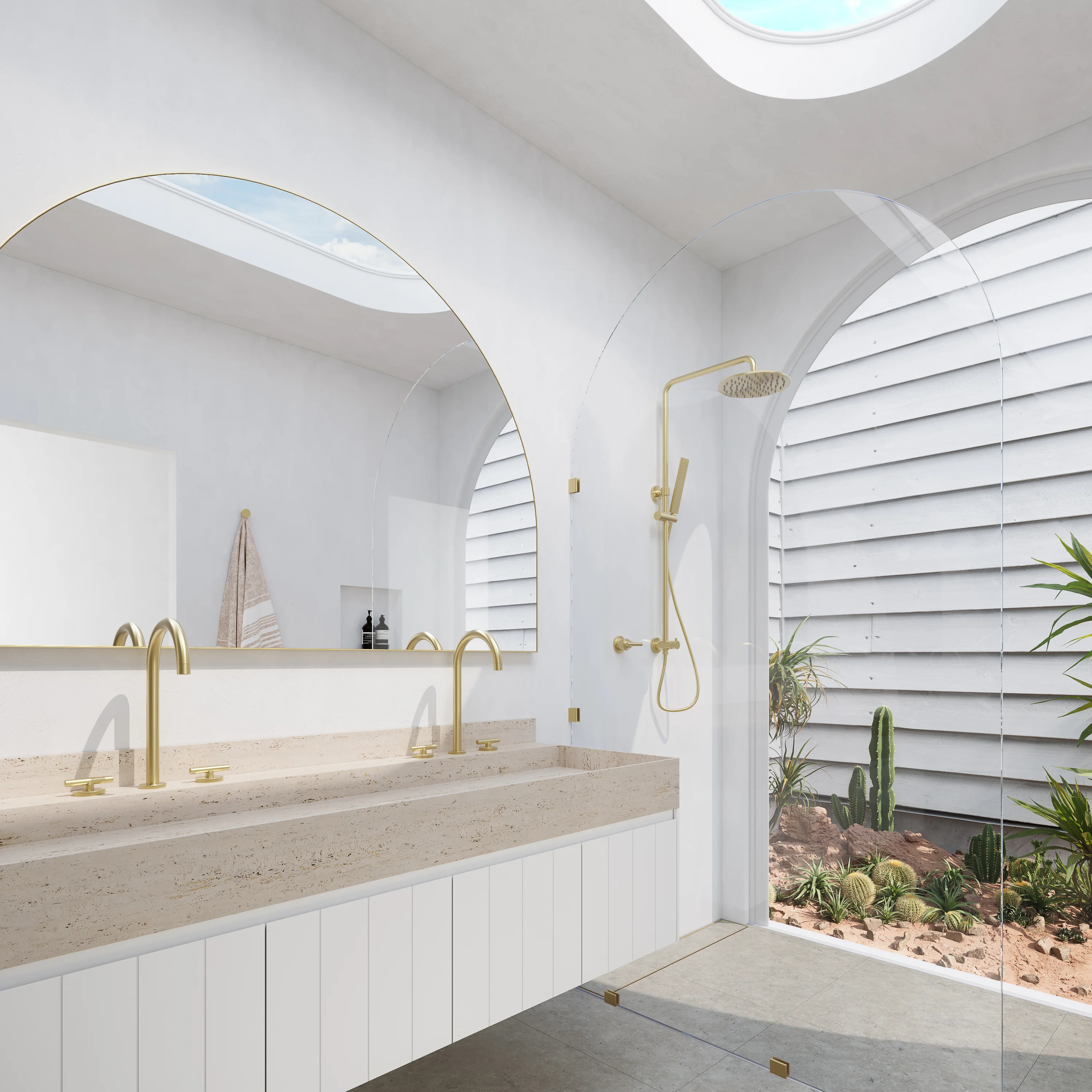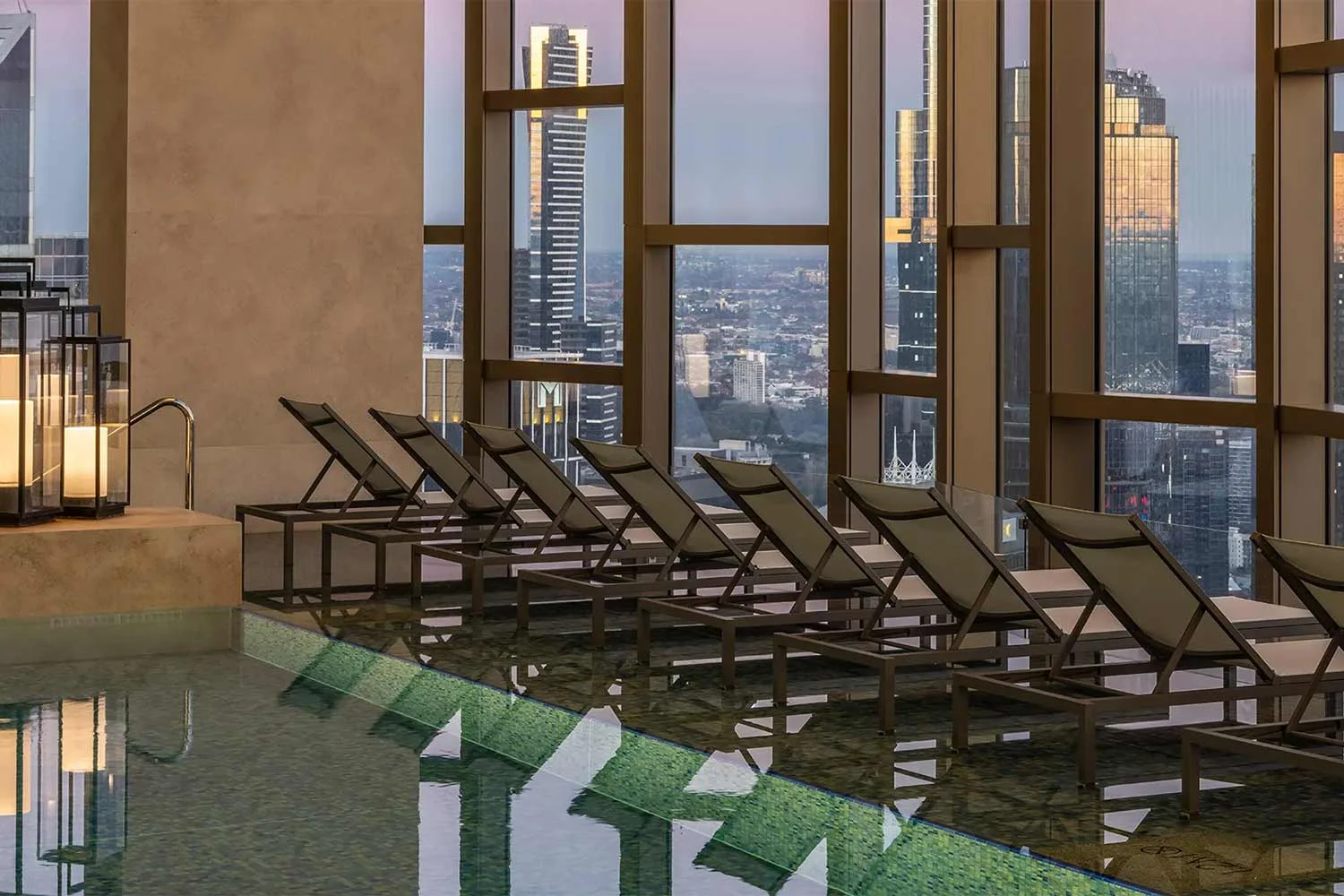Hotel Interior Design: Standout Spaces From Around the World

Have you ever admired hotel interior design and thought, “I could happily live here”? The best hotel interiors offer more than just comfort; they're a heightened home away from home that captures the true essence of luxury living.
But what is it about these interiors that makes them so memorable? We access the key design elements, explore emerging trends in luxury hotel interior design, and highlight some standout spaces worldwide.
Paying Closer Attention to Hotel Interiors
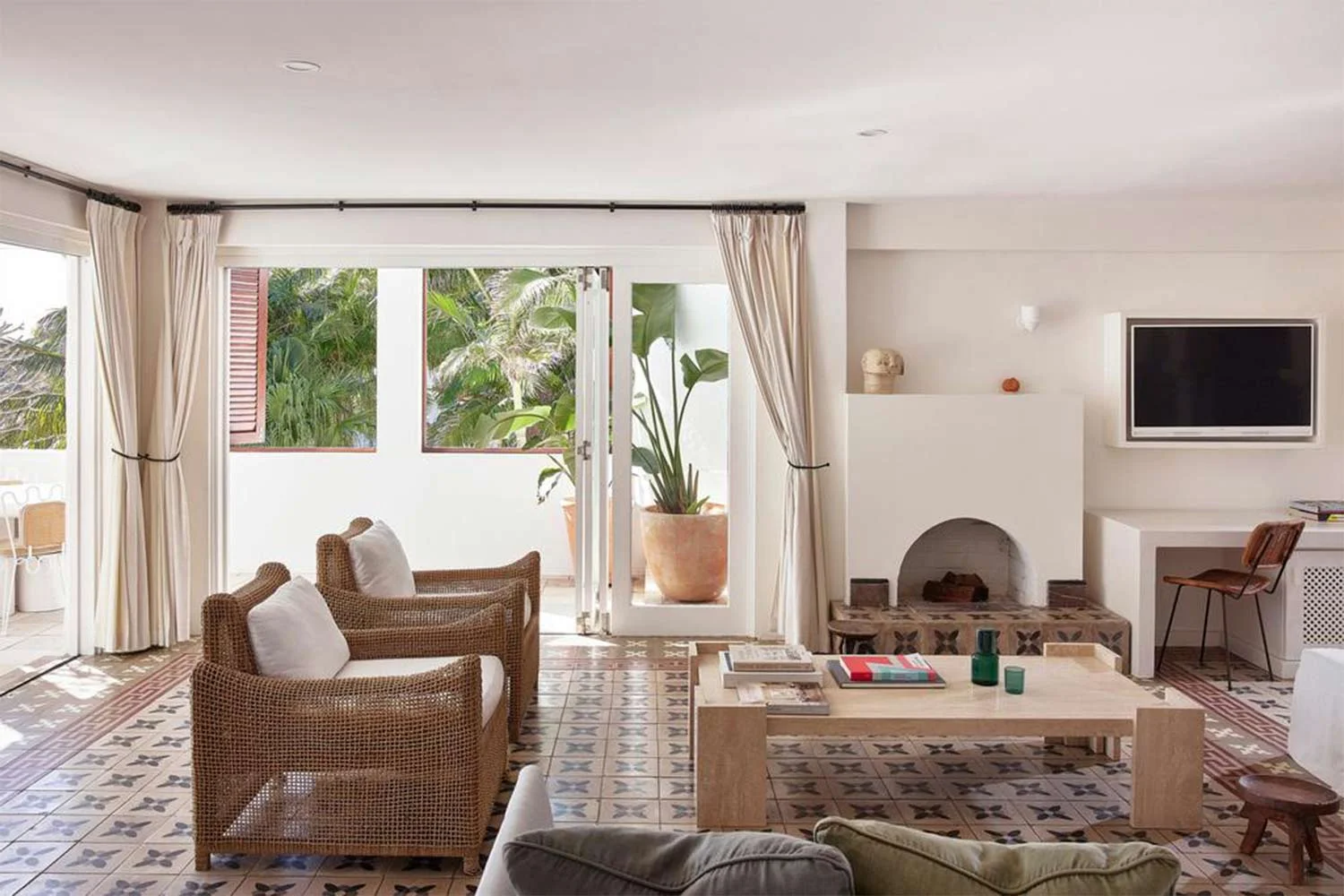
When it comes to first impressions, hotel design plays a key role in shaping how guests feel the moment they walk through the foyer. Yet, thoughtful design does more than create a visually appealing space; it helps build a distinctive brand identity that reflects the hotel's values, personality, and level of service. Every design element contributes to a cohesive experience that weaves together comfort, trust, and emotional connection, from the lobby to the guest rooms and beyond.
Well-designed hotel interiors lift the guest experience, turning a stay into something memorable that keeps people coming back — promoting positive word of mouth.
Core Elements of Exceptional Hotel Interiors
Exceptional hotel interiors are defined by their ability to balance form, function, and feeling with seemingly effortless precision. Yet there is a method to perfecting this. We explore key hotel spaces to explore how thoughtful design transforms the best of them into memorable, inviting environments.
Hotel Reception Area
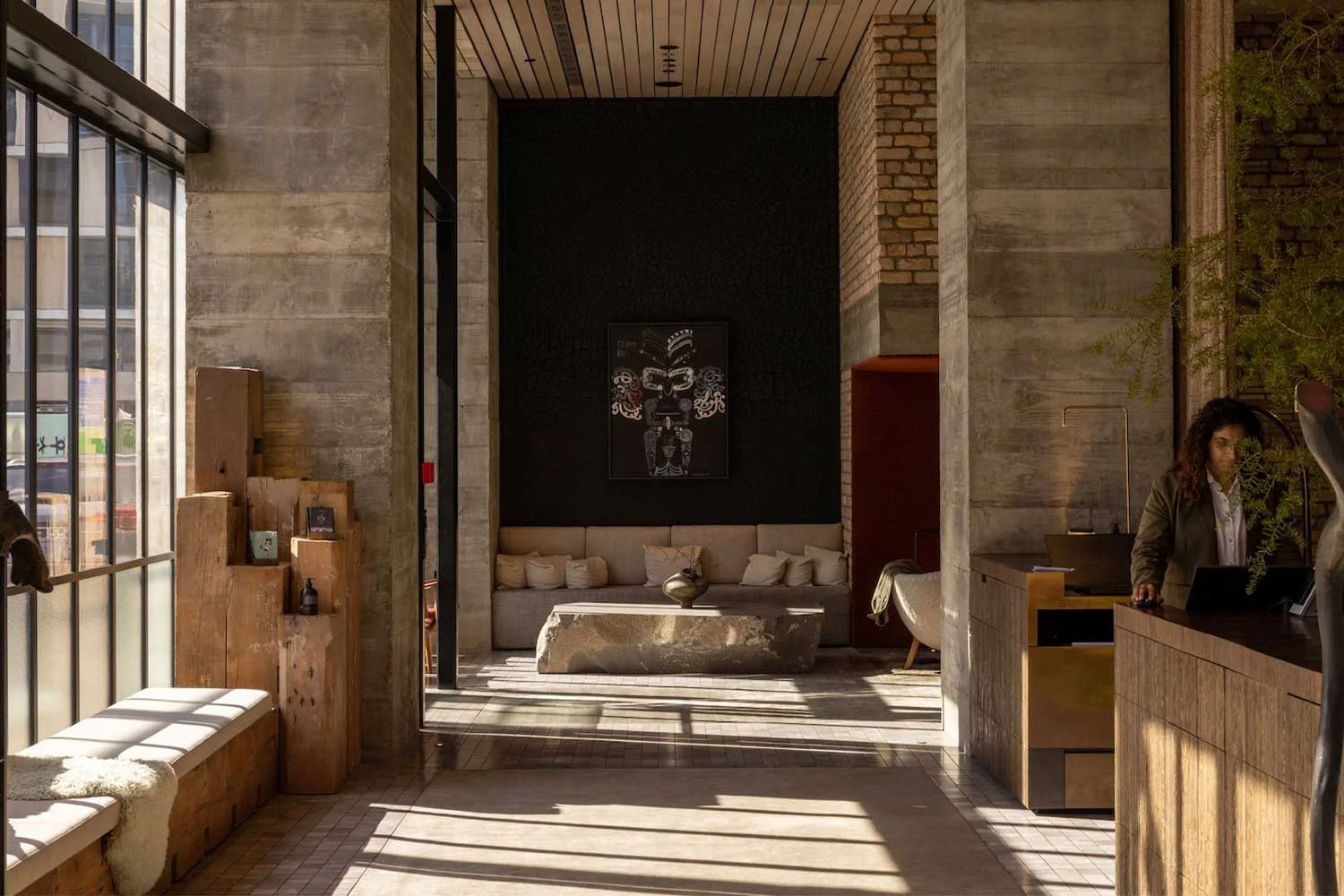
A hotel’s identity is shaped when a guest steps into the reception area. The lobby is a key space for expressing the hotel’s character, values, and level of service. In luxury hotels, interior design is crucial in creating beautiful, functional spaces through quality materials, carefully considered lighting, and intuitive layouts.
Incorporating elements of local culture adds authenticity and meaning, helping guests connect more deeply with their environment. A well-designed entrance sets the tone for the entire stay, blending visual impact with a thoughtful first impression.
A strong example is The Hotel Britomart in Auckland. With interiors by Cheshire Architects, the hotel combines handcrafted timber panelling, natural stone, and locally sourced art to create an elegant yet grounded atmosphere. Its lobby offers a calm, refined first impression, reflecting New Zealand’s design ethos and its connection to place.
Guest Room Design
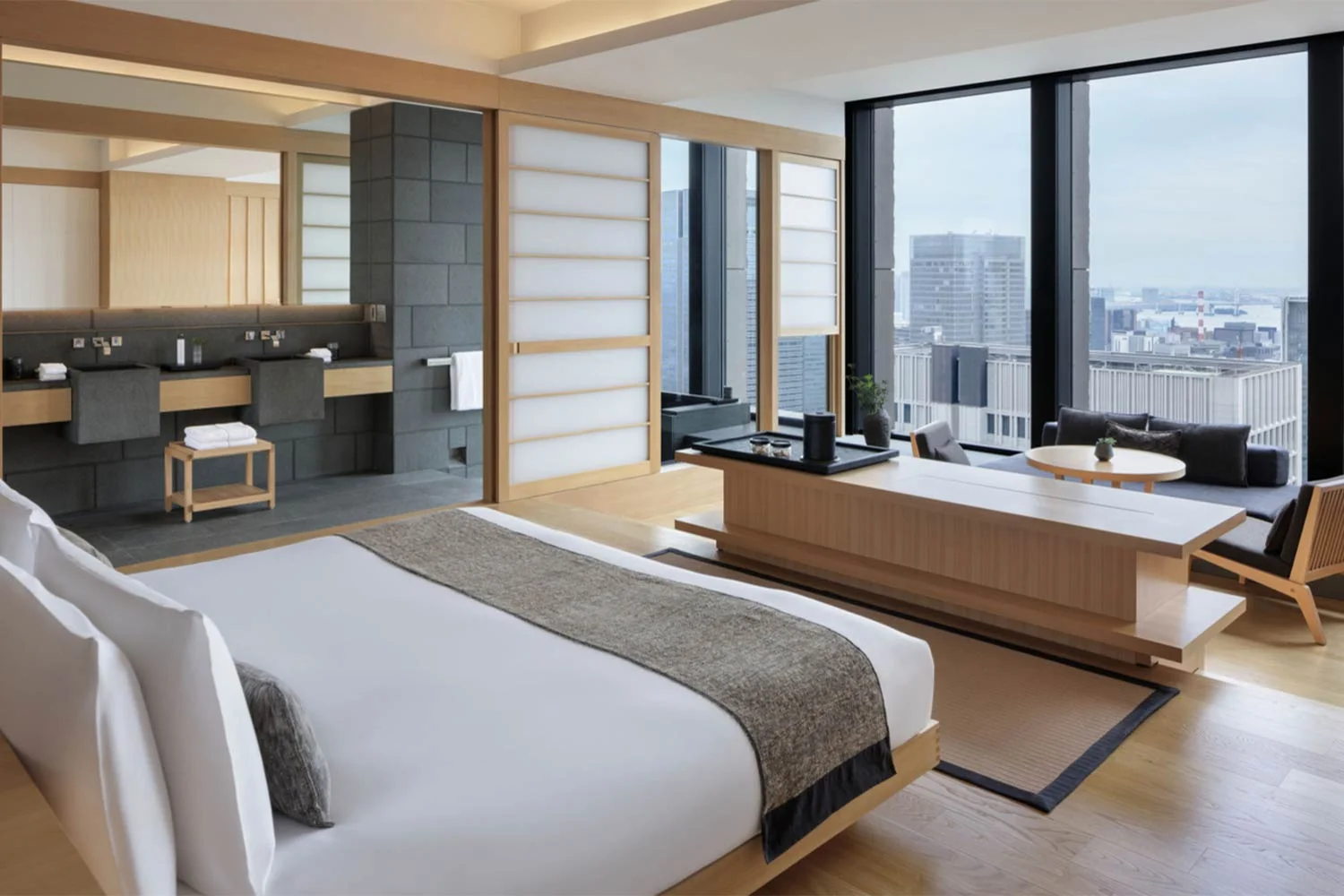
Naturally, guest rooms play an essential role in hotel interior design, cohesively combining layout, comfort, and convenience. Smart technologies should be seamlessly integrated so as not to overwhelm the space. In modern hotel interiors, the guest room design should assume a heightened and more luxurious role, offering not just a place to rest but a carefully curated sanctuary that reflects the hotel's identity while anticipating the guest’s needs.
Inspired by traditional Japanese residences, the guest rooms of Aman Tokyo, for example, feature clean-lined timber screens, washi paper walls, and deep soaking tubs with panoramic views of the city skyline. Every detail is carefully considered, from adjustable lighting and climate controls to curated amenities based on guest preferences. The result is a tranquil, contemporary sanctuary that subtly integrates technology while embodying Aman’s signature blend of local authenticity and understated luxury.
Restaurant and Lounge Areas
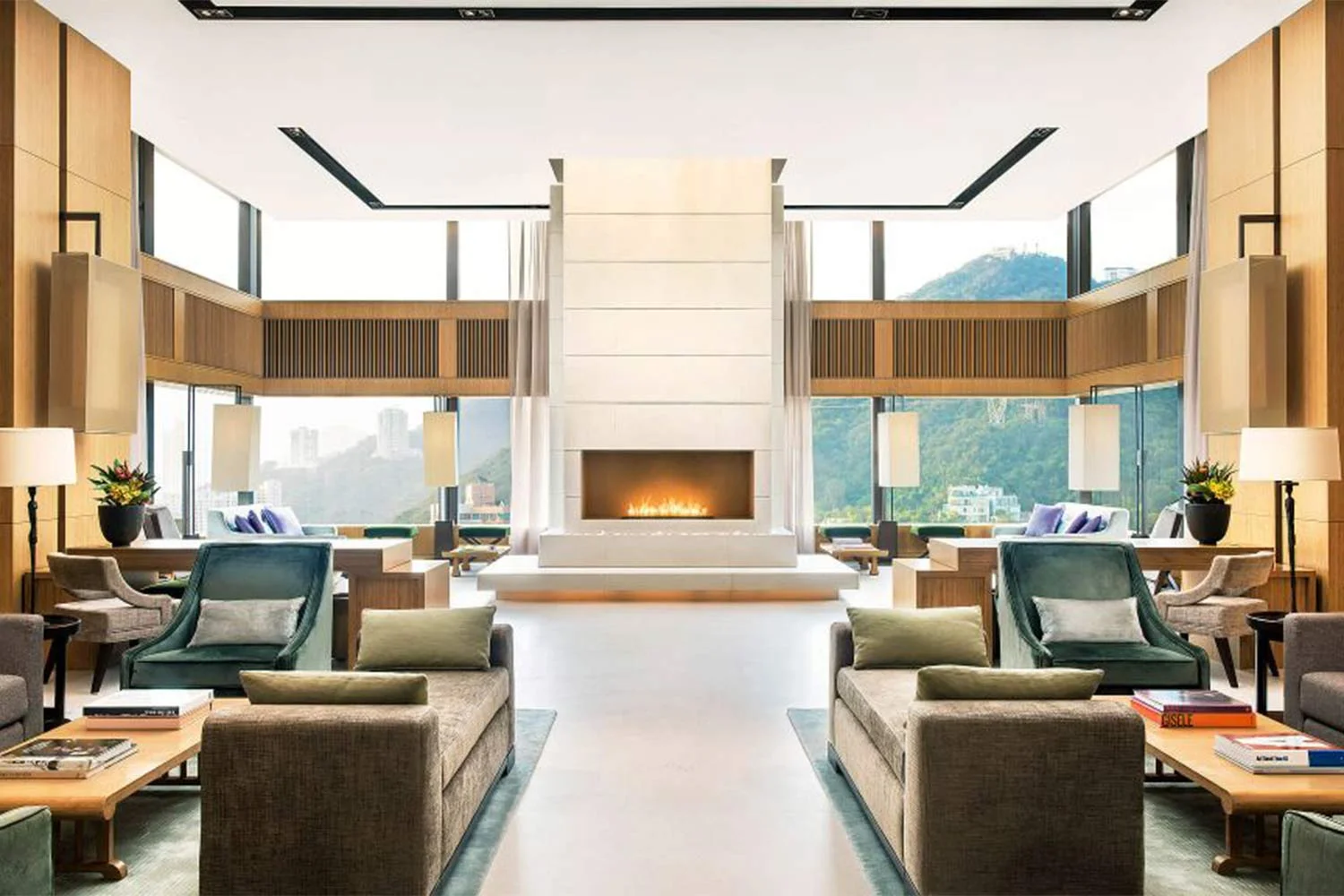
An inviting dining and lounge area is also essential to any luxury hotel interior. The most successful of these spaces expertly balance functionality with atmosphere, with furniture, lighting, and sound design all contributing to the experience.
The best-designed spaces effortlessly cultivate a contemporary yet laid-back atmosphere, carefully balancing style and ease. Furniture plays a key role in this balance, offering tactile comfort while reinforcing the overall design narrative through form, materiality, and placement. At The Upper House in Hong Kong, for instance, low-profile seating, warm-toned wood, and curated textures create a soothing spatial rhythm.
Sound design is often an overlooked aspect of hotel interiors, yet subtle audio cues play a decisive role in creating a distinctly calming ambience. At The Upper House (pictured above), a carefully composed soundscape of soft instrumental music and ambient tones shifts throughout the day, creating a serene, sensory experience that complements the hotel’s minimalist interiors and tranquil atmosphere.
Lighting sets a space's rhythm, with layers of ambient and decorative light adapting to the time of day and the desired atmosphere. Layered lighting schemes that blend warm ambient illumination, precise task lighting, and gentle decorative accents create a dynamic and inviting atmosphere. This thoughtful combination ensures that spaces are functional and visually appealing, adapting seamlessly from bright, energising daylight hours to cosy, relaxing evenings. Carefully balancing these different light sources enables designers to highlight particular architectural features, enhance textures, and evoke the desired mood.
Spa and Bathroom Areas
A thoughtfully designed bathroom or spa area is a defining feature of high-end hotel interiors. These spaces do more than meet practical needs; they offer moments of escape and indulgence. The most successful designs strike a careful balance between function and tranquillity, with material choices, lighting, and spatial flow all contributing to a deeply restorative experience. Clean, luxurious, and minimal, these spaces promote a soothing atmosphere that uses natural materials and lighting to their advantage.
Consider The Ritz-Carlton in Melbourne, Australia, where the spa epitomises calm sophistication. Rich marble detailing, timber accents, and soft, layered lighting create a tranquil retreat that captures the essence of contemporary luxury hotel design.
Hotel Interior Design Trends 2025
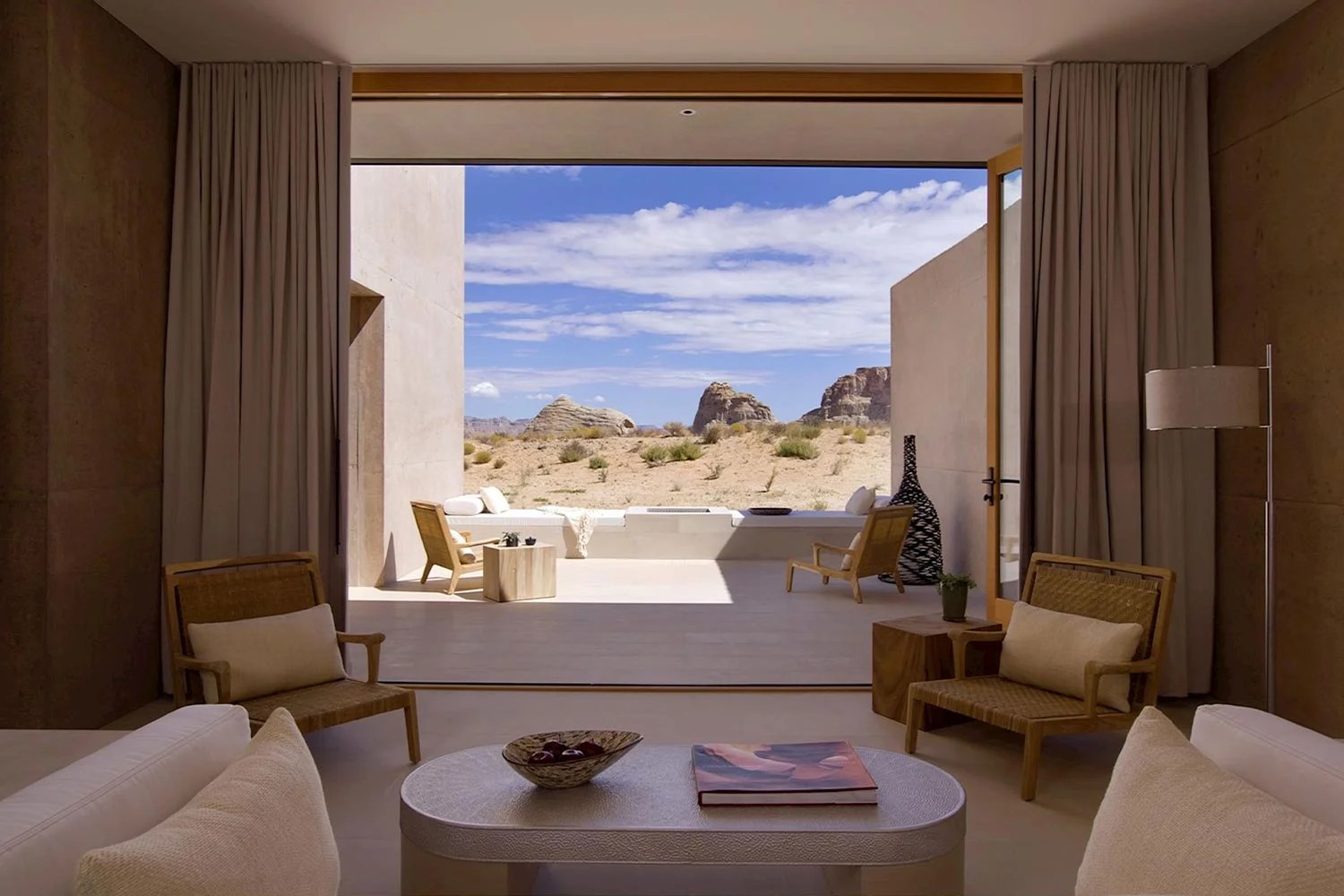
As environmental awareness continues to rise, it’s no surprise that sustainability and eco-friendly materials are taking centre stage in hotel interior design for 2025. Biophilic design and its deepened connection to nature are becoming a central theme, promoting well-being while reducing environmental impact.
Zero-waste bathrooms, designed with waste reduction in mind, often include features like refillable cosmetics dispensers, biodegradable toiletries, and chemical-free cleaning products. Complementing this is the sleep-enhancing use of blackout systems, which block external light and may even be paired with automated controls that reduce in-room electricity use overnight.
Another key trend is integrating smart technology to enhance comfort and energy efficiency, including sensor taps, heated towel rails or heated ladders with timers, and app-controlled lighting and ventilation systems.
In 2025, hotel interiors will increasingly showcase handcrafted artistry and cultural influences, highlighting locally sourced materials and custom-made pieces that authentically capture the spirit of their location.
Boutique hotel interior ideas are now incorporating room personalisation, using smart voice-activated systems that allow guests to customise lighting, temperature, and other features to their liking. An example is Aloft Hotels; their appropriately named Project: Jetson experiment will enable guests to control these settings via an iPad through a custom Aloft app.
Interiors That Redefine the Hotel Experience
What makes some hotel interiors stand out and feel truly inspirational, no matter where they are in the world? Predominantly, they are spaces that go beyond aesthetics, offering a thoughtful balance of design, atmosphere, and cultural connection. Their success lies not only in visual appeal but also in the lasting impressions they create through architectural innovation, locally inspired touches, and a seamless blend of comfort, functionality, and identity.
Ett Hem, Stockholm, Sweden
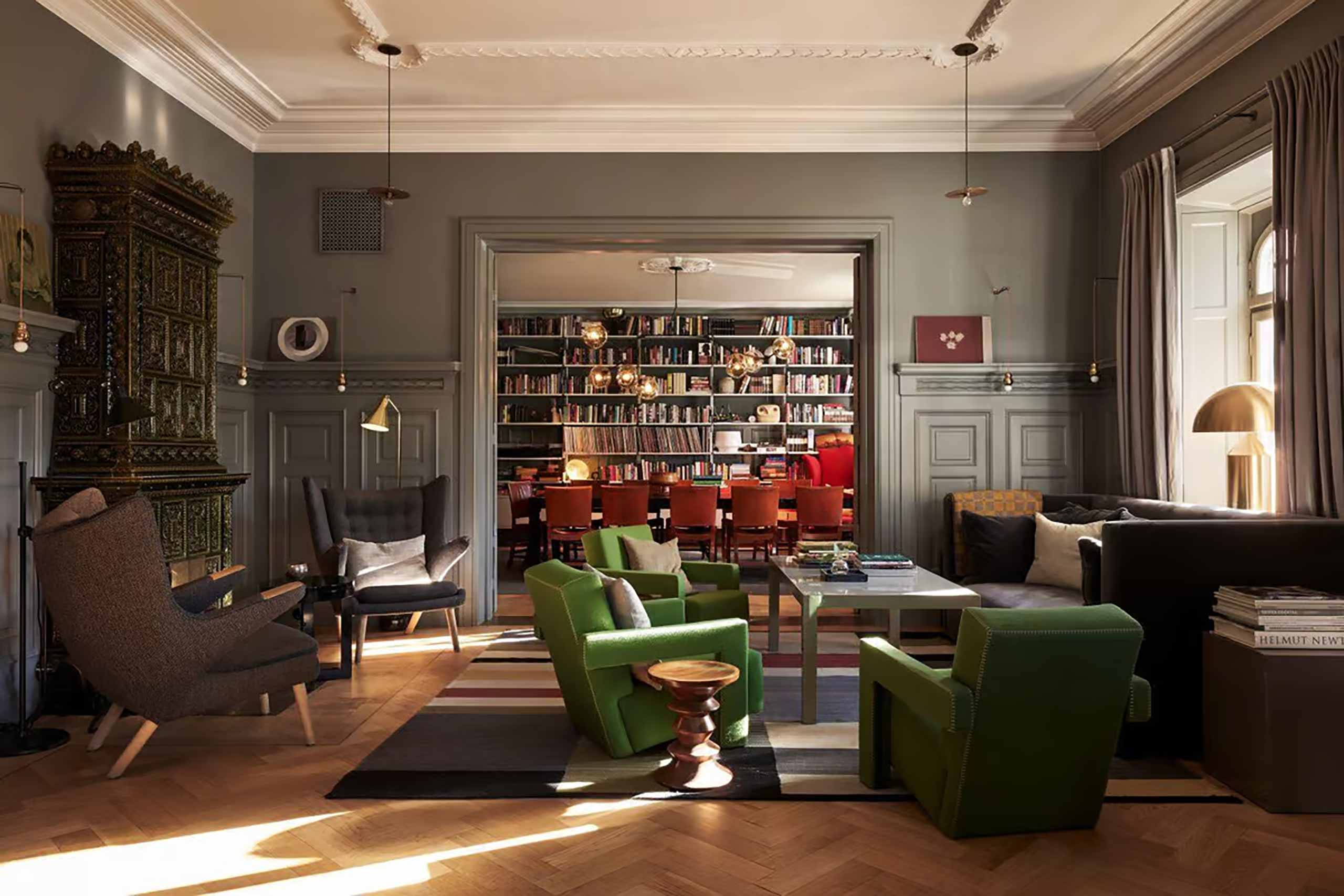
Known for its homely, intimate feel, Ett Hem in Stockholm, Sweden, offers an experience that feels more like staying with friends than at a hotel. This sense of warmth is created through a carefully curated mix of antique furniture, natural textures, and idiosyncratic touches, such as bookshelves in the lounge and living areas. A welcoming, open-plan kitchen invites guests to wander in, pour a glass of wine, or enjoy a homemade snack, just as they might at home. Designed by Ilse Crawford, the space embodies quiet luxury, encouraging guests to slow down and settle in, beautifully blurring the line between hospitality and home.
This attention to detail extends throughout the property, with each room thoughtfully designed to reflect lived-in comfort. Soft lighting, cosy fabrics, and subtle colour palettes create a calming retreat, allowing guests to unwind and feel at ease during their stay.
Atlantis, The Palm, Dubai
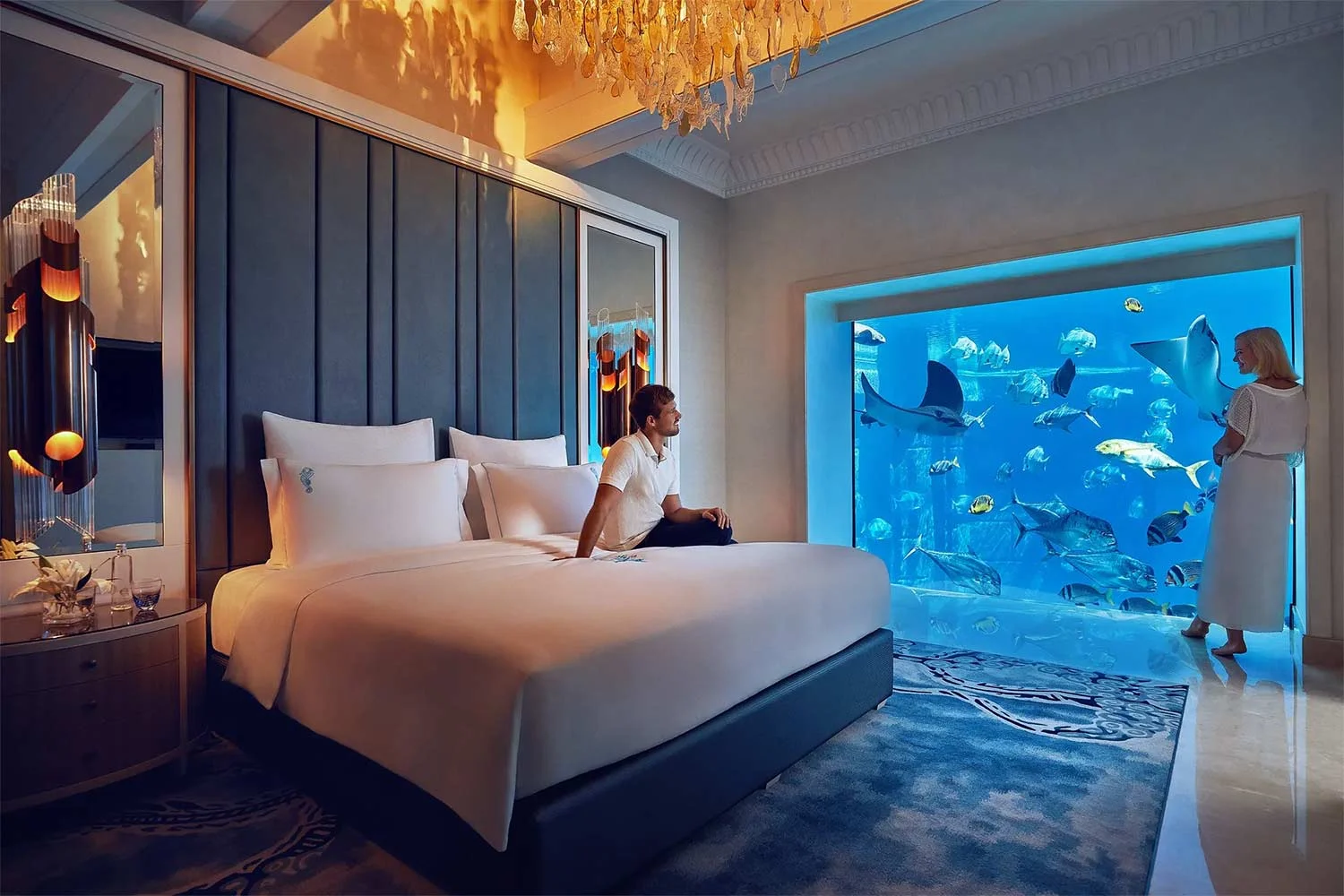
Moving from the subtle to the spectacular, no round-up of inspirational hotel interiors would be complete without a stop in Dubai. Atlantis, The Palm is a standout, drawing on the myth of Atlantis to deliver an opulent, otherworldly theme brought to life with astonishing detail.
Few features are as striking as its underwater suites. Floor-to-ceiling windows immerse guests in a vibrant aquatic world, offering an unforgettable view of marine life. This luxury hotel interior isn’t just about spectacle; it creates a sense of wonder, allowing guests to feel part of the underwater magic.
Designing Memorable Hotel Interiors
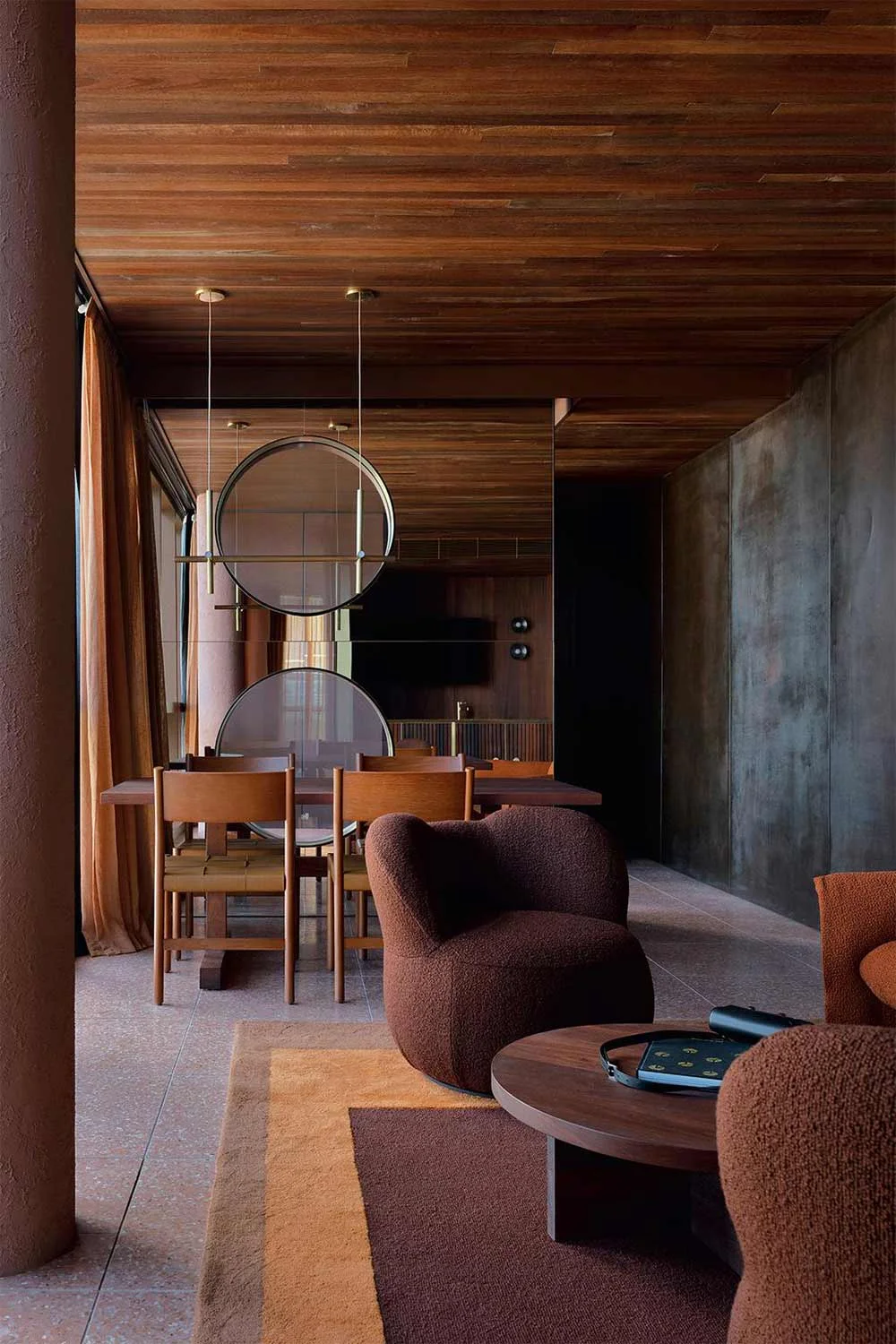
Great modern hotel interiors strike the right balance between warm hospitality and solid interior design principles. Cohesiveness in branding and aesthetics, while ensuring accessibility and user flow, is key. As we have learned, lighting, scent, and sound also play crucial roles in creating the appropriate ambience. Additionally, incorporating local customs and cultural elements can contribute to a more authentic and memorable guest experience, fostering a deeper connection between the space and its surroundings.
It’s a delicate balance, but when done well, it can lead to some of the most awe-inspiring spaces in hospitality design.
For further architectural inspiration, check out the following:
Belvedere: Bringing Hollywood-Style Luxury Living to the Gold Coast
The Lakehouse: Organic Architecture Meets Vibrant 70s Flair
How to Design Your Perfect Home Library
 Our Range
Our Range 










































